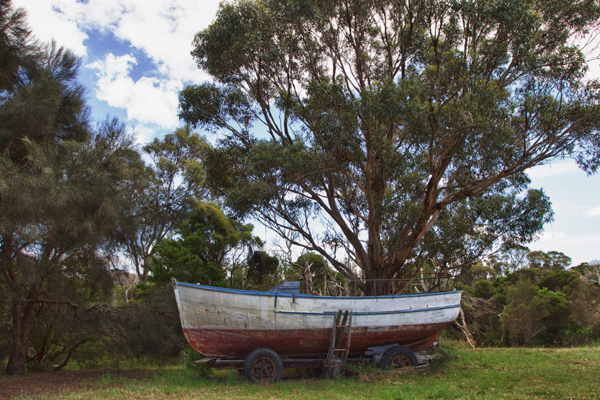 After chatting with Carolyn, the lamb-farmer-cum-mayor of Lady-Barron, at the Furneaux Tavern on Flinders Island, I wandered into the bar to take a picture of the “FREE NUTS” sign and came across a copy of an article from the Launceston Examiner with a photo of a smiling man holding what looks like a plate of fried chicken beneath this headline: “Mutton-birds: Uniquely Tasmanian.”
After chatting with Carolyn, the lamb-farmer-cum-mayor of Lady-Barron, at the Furneaux Tavern on Flinders Island, I wandered into the bar to take a picture of the “FREE NUTS” sign and came across a copy of an article from the Launceston Examiner with a photo of a smiling man holding what looks like a plate of fried chicken beneath this headline: “Mutton-birds: Uniquely Tasmanian.”
I could tell you what the article said but, what the hell, let’s just run the whole thing. This way you won’t think I’m making up this story about people eating mutton birds in Tasmania. I don’t know exactly when this article ran (judging by the photo, I’d say it was sometime in the last few years) but it was written by Michael Lowe.
“A cross between bacon and smoked fish with a big dash of fat is one description of that Tasmanian delicacy, mutton-bird. Shops are now selling frozen mutton-bird and at least one has gone a step further and offers a smoked variety.
“Casalinga owner Rob Perry said smoked mutton-bird was popular at the Charles St. butchery in Launceston, described as an emporium of traditional and gourmet meats.
“The mutton-bird season finished last month and Mr. Perry expects the supply of frozen chicks to last into next month. He is a qualified butcher and formerly ran the butchery Beef Wellington at Prospect Marketplace. But Mr. Perry grew up on Flinders Island and caught mutton-birds as a youth. Now he sells the birds both smoked and frozen. He says the smoked variety is by far the most popular because it avoids unpleasant cooking smells. He cooks every second day and is selling up to 30 smoked birds a day. Mutton-birds are harvested on the Bass Strait islands and are sold as plucked or “skun” birds. Skun birds have been skinned, which means the layer of fat beneath the skin has also largely been removed.
“Mr. Perry marinates the birds in brine before smoking them at 85 degrees for three hours, using pepper and hickory to vary the smoke flavour. The smoking produces an intense flavour—like a cross between bacon and smoked fish. An alternative is to cook the birds on a hot barbecue for 30 minutes or bake for 60 minutes in the oven at 150-180 degrees. But Mr. Perry warns the high fat content means oven cooking produces a strong smell.
“He says mutton-birds are an authentic Tasmanian product which strikes a chord with consumers. ‘It is very, very popular because it’s unique,’ he said. ‘People are buying it because they want to try it. But we have a lot come back and say they’re very impressed by the flavor. We have a unique product in Tasmania, let’s see how we can diversify and put Tasmania more on the map.’”
No wonder the Flinders Island bar has that “FREE NUTS” sign.




Recent Comments